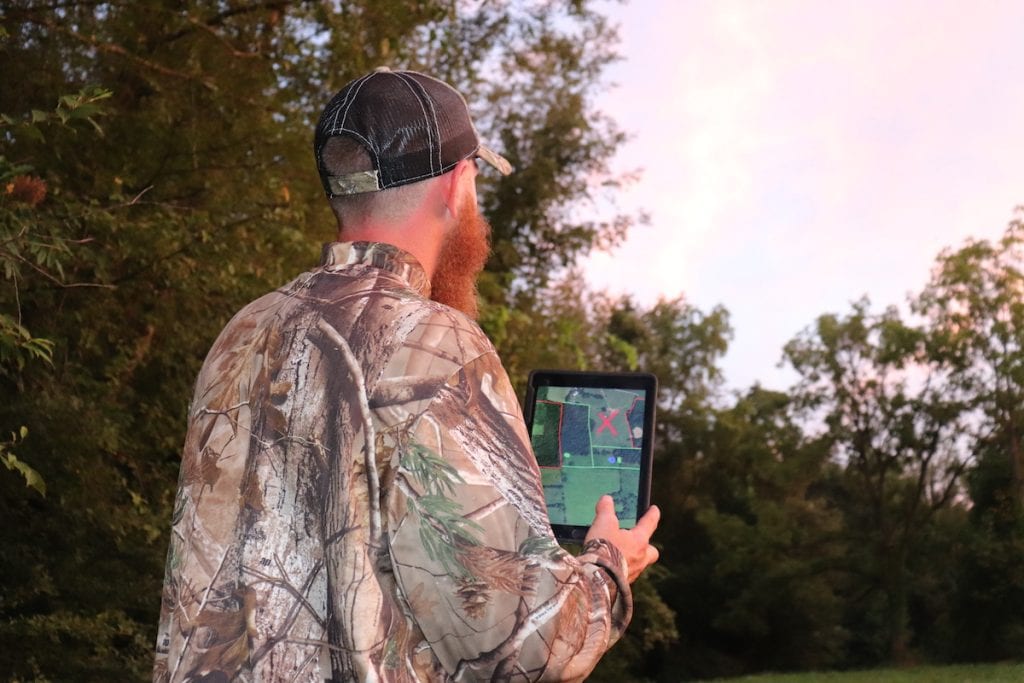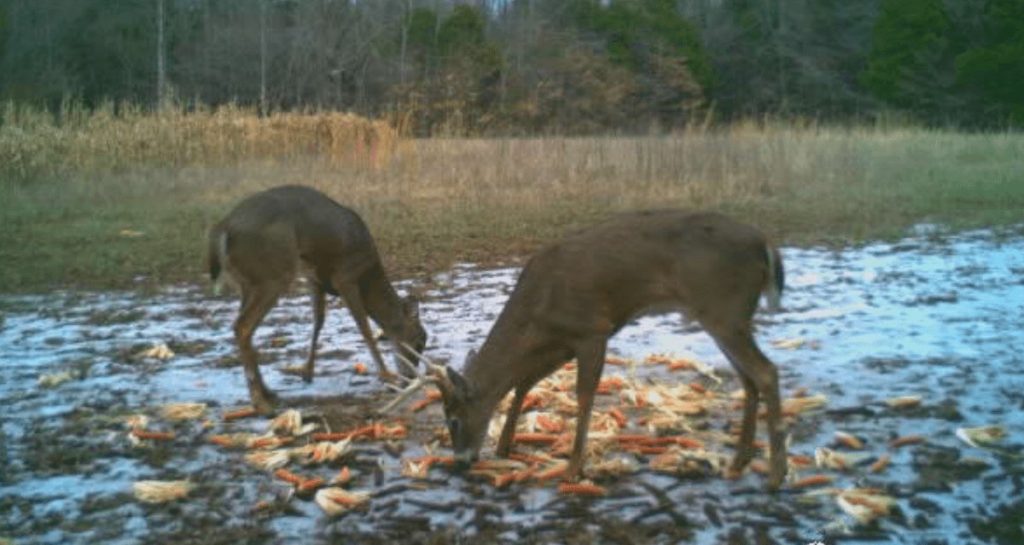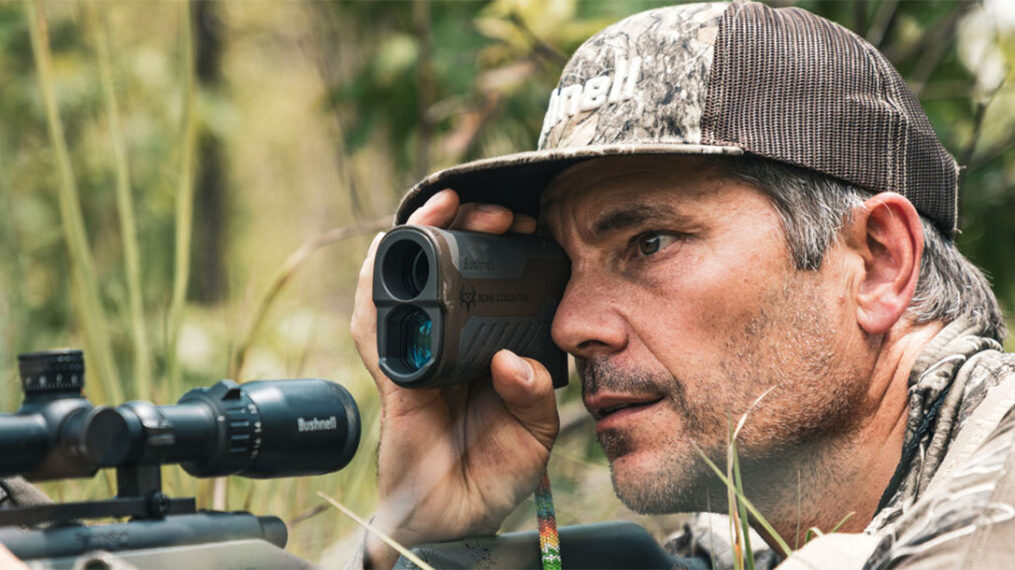Hunting isn’t just a pastime; it’s an economic powerhouse, contributing a significant chunk to our country’s financial well-being.
So, getting to grips with the figures isn’t just interesting, it’s a nod to the profound impact this tradition has from coast to coast.
Unpacking these numbers gives us insight into the robust role hunting plays in conservation, supporting local economies, and fostering a sustainable connection with our natural environment.
How Many Hunting Licenses Were Sold in 2023?
According to the U.S. Fish And Wildlife Service, a total of 38,689,087 Hunting Licenses, Tags, Permits & Stamps had been registered for the year 2023.
Resident Hunting Licenses, Tags, Permits and Stamps: 34,497,074
Cost Resident Hunting Licenses, Tags, Permits, and Stamps: $644,478,371
Non-Resident Hunting Licenses, Tags, Permits, and Stamps: 4,192,013
Cost Non-Resident Hunting Licenses, Tags, Permits, and Stamps: $439,148,401
Gross Cost Total: $1,015,040,127
Wow, that’s an astonishing figure!
Paid Hunting License Holders 2023
In 2023, there were a total of 15,938,891 paid hunting license holders across the U.S.
You´ll find all of the data here: U.S. Fish and Wildlife Service
The total revenue generated from hunting licenses, tags, permits, and stamps in 2023, reaching over $1 billion, underscores the immense value and impact of the hunting industry and us hunters.
These numbers not only highlight the economic significance but also the thriving community and dedication to wildlife management and conservation efforts across the country.
Changes in the Number of Hunting Licenses
Let’s now examine how these 2023 figures stack up against the data we gathered in 2020.
Comparing the current numbers with those from 2020, there’s a noticeable difference in the gross revenue from hunting licenses.
In 2020, the total was $1,008,970,364, with resident hunting licenses contributing $607,939,133.
By 2023, resident licenses have risen to $644,478,371, marking a modest uptick.
And by the way, observing the data from 2021 and 2022, it’s interesting to note that those figures were $30 to $40 million lower than in 2023.
This upward trend is encouraging to see.
Fun Fact:
Did you know that Guam sold 455 resident hunting licenses (including tags and permits) in 2023?
Top 11 States with the Highest Number of Hunting License Holders
This includes both resident and non-resident hunting licenses.
Every state categorizes hunters into two groups for hunting licenses and tags: residents and non-residents.
As a general rule, states tend to ask a heftier price for licensing fees from non-resident hunters compared to their resident counterparts.
| State | Resident– Licenses, tags, permits, stamps | Non-Resident– Licenses, tags, permits, stamps | Total |
| WISCONSIN | 4,291,915 | 262,100 | 4,554,015 |
| MICHIGAN | 2,138,105 | 73,705 | 2,211,810 |
| TEXAS | 1,726,223 | 76,599 | 1,802,822 |
| MISSOURI | 1,662,065 | 98,132 | 1,760,197 |
| GEORGIA | 1,388,269 | 178,466 | 1,566,735 |
| ILLINOIS | 1,398,692 | 90,663 | 1,489,355 |
| MINNESOTA | 1,408,568 | 51,635 | 1,460,203 |
| IDAHO | 1,086,624 | 277,899 | 1,364,523 |
| OREGON | 1,100,361 | 73,412 | 1,173,773 |
| NEW YORK | 1,028,190 | 70,991 | 1,099,181 |
States Generating the Highest Revenue from Hunting Licenses
COLORADO
$76,975,492 – Gross Cost Resident and Non-Resident. Number of licenses, tags, permits, and stamps: 799,965
TEXAS
$49,035,615 – Gross Cost Resident and Non-Resident. Number of licenses, tags, permits, and stamps: 1,802,822
IDAHO
$42,924,873 – Gross Cost Resident and Non-Resident. Number of licenses, tags, permits, and stamps: 1,364,523
PENNSYLVANIA
$42,569,391 – Gross Cost Resident and Non-Resident. Number of licenses, tags, permits, and stamps: 953,903
MONTANA
$38,533,736 – Gross Cost Resident and Non-Resident. Number of licenses, tags, permits, and stamps: 1,086,200
MICHIGAN
$37,140,936 – Gross Cost Resident and Non-Resident. Number of licenses, tags, permits, and stamps: 2,211,810
WISCONSIN
$35,839,773 – Gross Cost Resident and Non-Resident. Number of licenses, tags, permits, and stamps: 4,554,015
Fun Fact:
Total Unadjusted Actual Gross Cost of Hunting Licenses from 1967-2023:
$28,783,805,103 (wow)
WYOMING
$35,230,187 – Gross Cost Resident and Non-Resident. Number of licenses, tags, permits, and stamps: 274,963
MINNESOTA
$34,064,196 – Gross Cost Resident and Non-Resident. Number of licenses, tags, permits, and stamps: 1,460,203
ILLINOIS
$32,422,324 – Gross Cost Resident and Non-Resident. Number of licenses, tags, permits, and stamps: 1,489,355
OREGON
$30,371,898 – Gross Cost Resident and Non-Resident. Number of licenses, tags, permits, and stamps: 1,173,773
TENNESSEE
$28,461,780 – Gross Cost Resident and Non-Resident. Number of licenses, tags, permits, and stamps: 1,054,081
OHIO
$27,150,761 – Gross Cost Resident and Non-Resident. Number of licenses, tags, permits, and stamps: 878,865
MISSOURI
$26,175,734 – Gross Cost Resident and Non-Resident. Number of licenses, tags, permits, and stamps: 1,760,197
CALIFORNIA
$24,111,812 – Gross Cost Resident and Non-Resident. Number of licenses, tags, permits, and stamps: 1,018,257
KANSAS
$23,827,799 – Gross Cost Resident and Non-Resident. Number of licenses, tags, permits, and stamps: 422,066
NEW YORK
$23,607,124 – Gross Cost Resident and Non-Resident. Number of licenses, tags, permits, and stamps: 1,099,181
All States (click to expand)
ALABAMA
$22,940,214 – Gross Cost Resident and Non-Resident. Number of licenses, tags, permits, and stamps: 854,916
KENTUCKY
$22,838,357 – Gross Cost Resident and Non-Resident. Number of licenses, tags, permits, and stamps: 555,368
VIRGINIA
$22,681,542 – Gross Cost Resident and Non-Resident. Number of licenses, tags, permits, and stamps: 771,195
IOWA
$22,462,897 – Gross Cost Resident and Non-Resident. Number of licenses, tags, permits, and stamps: 684,702
UTAH
$21,142,034 – Gross Cost Resident and Non-Resident. Number of licenses, tags, permits, and stamps: 481,714
SOUTH DAKOTA
$20,853,694 – Gross Cost Resident and Non-Resident. Number of licenses, tags, permits, and stamps: 360,062
ARIZONA
$20,804,661 – Gross Cost Resident and Non-Resident. Number of licenses, tags, permits, and stamps: 617,898
GEORGIA
$20,684,035 – Gross Cost Resident and Non-Resident. Number of licenses, tags, permits, and stamps: 1,566,735
ARKANSAS
$20,039,798 – Gross Cost Resident and Non-Resident. Number of licenses, tags, permits, and stamps: 510,212
NEW MEXICO
$19,909,954 – Gross Cost Resident and Non-Resident. Number of licenses, tags, permits, and stamps: 489,379
WASHINGTON
$19,069,821 – Gross Cost Resident and Non-Resident. Number of licenses, tags, permits, and stamps: 803,307
NEBRASKA
$16,080,559 – Gross Cost Resident and Non-Resident. Number of licenses, tags, permits, and stamps: 401,248
MISSISSIPPI
$13,905,264 – Gross Cost Resident and Non-Resident. Number of licenses, tags, permits, and stamps: 420,866
NORTH CAROLINA
$13,165,178 – Gross Cost Resident and Non-Resident. Number of licenses, tags, permits, and stamps: 332,215
OKLAHOMA
$13,129,752 – Gross Cost Resident and Non-Resident. Number of licenses, tags, permits, and stamps: 370,811
INDIANA
$12,624,299 – Gross Cost Resident and Non-Resident. Number of licenses, tags, permits, and stamps: 411,339
NORTH DAKOTA
$12,354,470 – Gross Cost Resident and Non-Resident. Number of licenses, tags, permits, and stamps: 562,595
SOUTH CAROLINA
$10,167,611 – Gross Cost Resident and Non-Resident. Number of licenses, tags, permits, and stamps: 986,512
LOUISIANA
$9,796,247 – Gross Cost Resident and Non-Resident. Number of licenses, tags, permits, and stamps: 602,579
WEST VIRGINIA
$8,933,132 – Gross Cost Resident and Non-Resident. Number of licenses, tags, permits, and stamps: 686,655
NEW JERSEY
$8,225,334 – Gross Cost Resident and Non-Resident. Number of licenses, tags, permits, and stamps: 322,162
MAINE
$8,192,139 – Gross Cost Resident and Non-Resident. Number of licenses, tags, permits, and stamps: 245,107
FLORIDA
$7,960,732 – Gross Cost Resident and Non-Resident. Number of licenses, tags, permits, and stamps: 321,564
NEVADA
$7,635,261 – Gross Cost Resident and Non-Resident. Number of licenses, tags, permits, and stamps: 146,356
ALASKA
$7,633,211 – Gross Cost Resident and Non-Resident. Number of licenses, tags, permits, and stamps: 579,526
MARYLAND
$6,337,975 – Gross Cost Resident and Non-Resident. Number of licenses, tags, permits, and stamps: 321,279
NEW HAMPSHIRE
$5,064,873 – Gross Cost Resident and Non-Resident. Number of licenses, tags, permits, and stamps: 168,182
VERMONT
$4,602,611 – Gross Cost Resident and Non-Resident. Number of licenses, tags, permits, and stamps: 197,782
MASSACHUSETTS
$2,595,473 – Gross Cost Resident and Non-Resident. Number of licenses, tags, permits, and stamps: 278,765
CONNECTICUT
$2,194,750 – Gross Cost Resident and Non-Resident. Number of licenses, tags, permits, and stamps: 102,071
DELAWARE
$1,529,047 – Gross Cost Resident and Non-Resident. Number of licenses, tags, permits, and stamps: 58,904
RHODE ISLAND
$509,799 – Gross Cost Resident and Non-Resident. Number of licenses, tags, permits, and stamps: 59,032
HAWAII
$461,034 – Gross Cost Resident and Non-Resident. Number of licenses, tags, permits, and stamps: 12,554
GUAM
$6,825 – Gross Cost Resident and Non-Resident. Number of licenses, tags, permits, and stamps: 455

The States With The Highest Cost on Average per Hunting License
Now, let’s dive into which states have the highest average cost per license. It’s crucial to note, though, that this isn’t entirely precise.
The data I utilized doesn’t factor in individuals purchasing multiple licenses. For instance, you might buy a resident license in your home state and also acquire a non-resident license for a hunting trip in another state.
This oversight means the numbers might be a bit off.
However, if we go ahead and divide the total gross costs by the total number of licenses (counting both residents and non-residents), we get an average cost per license.
It’s an interesting figure, for sure, but remember—it’s not exactly spot-on.
Here are our top 5
- WYOMING – On average $128,13
- COLORADO – On average $96,22
- SOUTH DAKOTA – On average $57,92
- KANSAS – On average $56,46
- NEVADA – On average $52,17
States With the “Lowest” Cost on Average per Hunting License
- WISCONSIN – On average $7,87
- RHODE ISLAND – On average $8,64
- MASSACHUSETTS – On average $9,31
- SOUTH CAROLINA – On average $10,31
- WEST VIRGINIA – On average $13,01
Alright, Wisconsin, what’s the story? Just kidding… but truly, Wisconsin leads the pack with the highest number of hunting licenses issued – so on average prices are low.
Top 16 States With The Most Paid Hunting License Holders
| STATE | Paid Hunting License Holders |
|---|---|
| TEXAS | 1,170,316 |
| PENNSYLVANIA | 953,903 |
| GEORGIA | 769,105 |
| TENNESSEE | 728,759 |
| WISCONSIN | 669,813 |
| MICHIGAN | 660,933 |
| NORTH CAROLINA | 654,251 |
| NEW YORK | 560,346 |
| MINNESOTA | 550,663 |
| MISSOURI | 509,963 |
| ALABAMA | 504,600 |
| OKLAHOMA | 499,182 |
| LOUISIANA | 442,678 |
| COLORADO | 370,736 |
| OHIO | 360,421 |
| ARIZONA | 349,554 |
Before you go…
Before you go, let’s take a moment to reflect.
This snapshot of the hunting world, from license sales to the revenue they generate, tells a story of an enduring tradition and a passion that contributes significantly to both the economy and ecology.
Remember that each license bought, each tag filled, is more than just a number—it’s a testament to the hunting heritage that we are all part of preserving.
So, as you step into the great outdoors, take pride in knowing you’re contributing to something bigger.
Until next time, keep the tradition alive and tread the wild with respect.
Happy hunting!
*Notes:
Participating in hunting and fishing generally requires state licenses to engage in these activities. Fees and revenues generated from licenses must be used for fish and wildlife conservation programs. The U.S. Fish and Wildlife Service uses the number of paid hunting and fishing licenses issued by states to calculate the distribution of WSFR funds. These dashboards present licenses issued as reported by the states. The licenses are grouped by apportionment year. The apportionment year is the federal fiscal year in which the licenses were used to calculate the distribution of funds. The apportionment year is two years after the states issued the licenses. For example, costs and number of license holders for 2023 represent license sales that occurred in 2021.
Source: U.S. Fish and Wildlife Service







